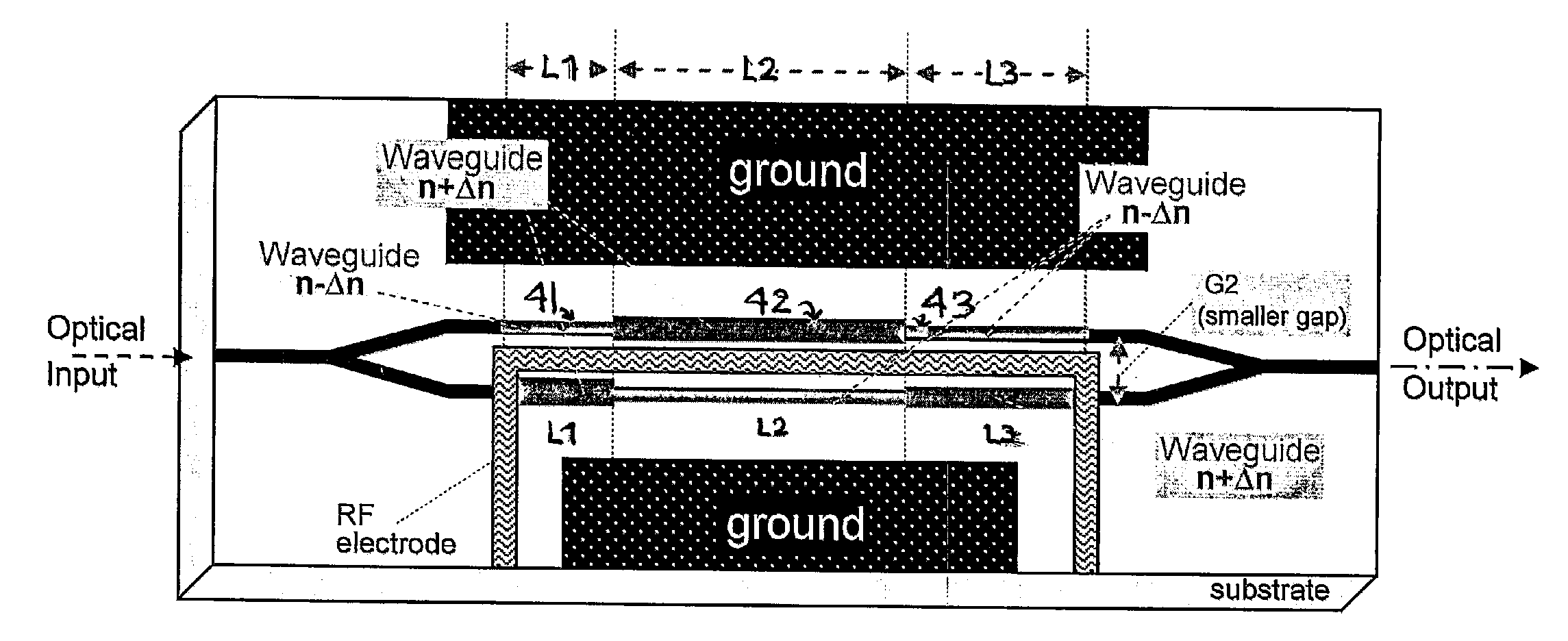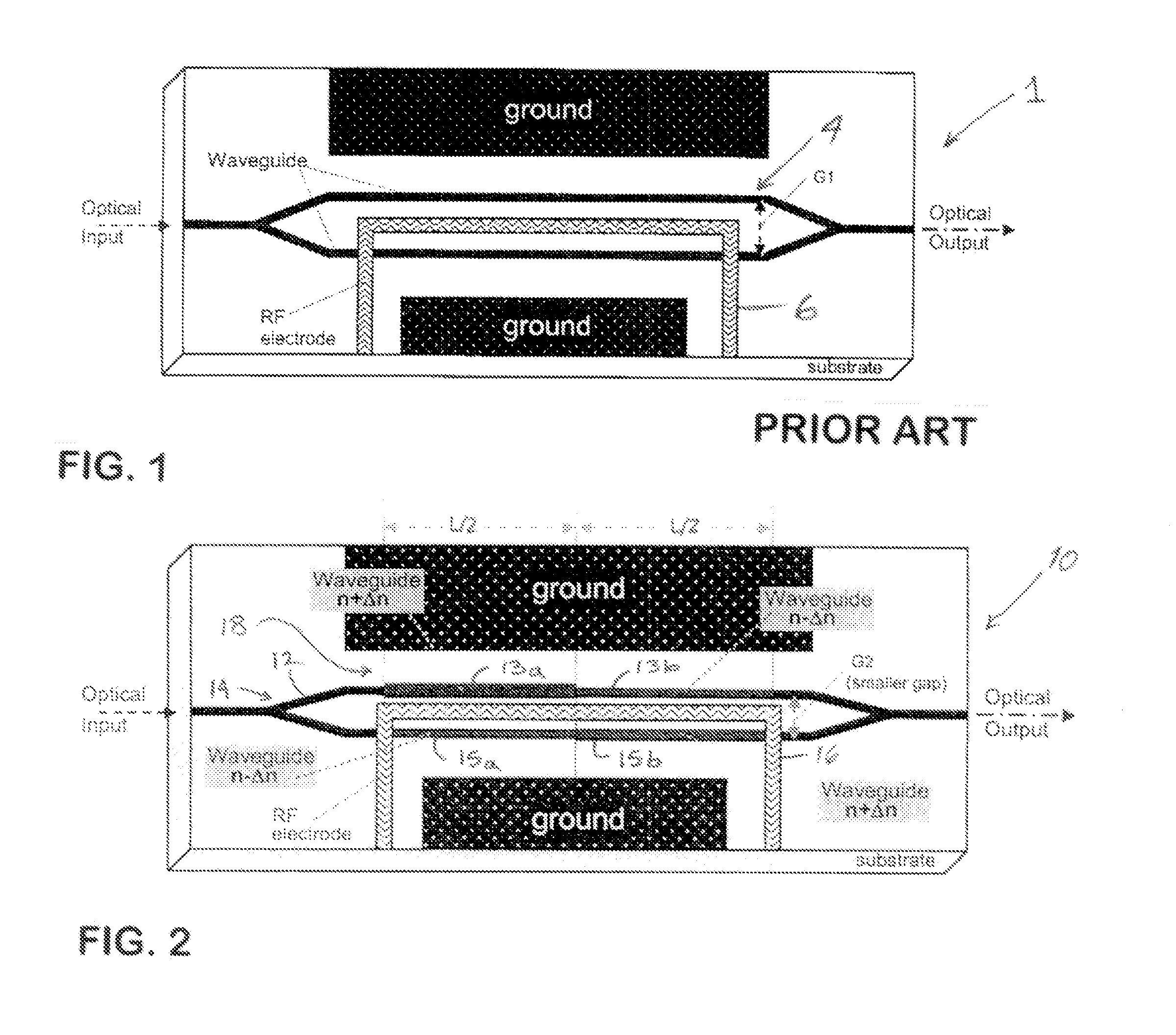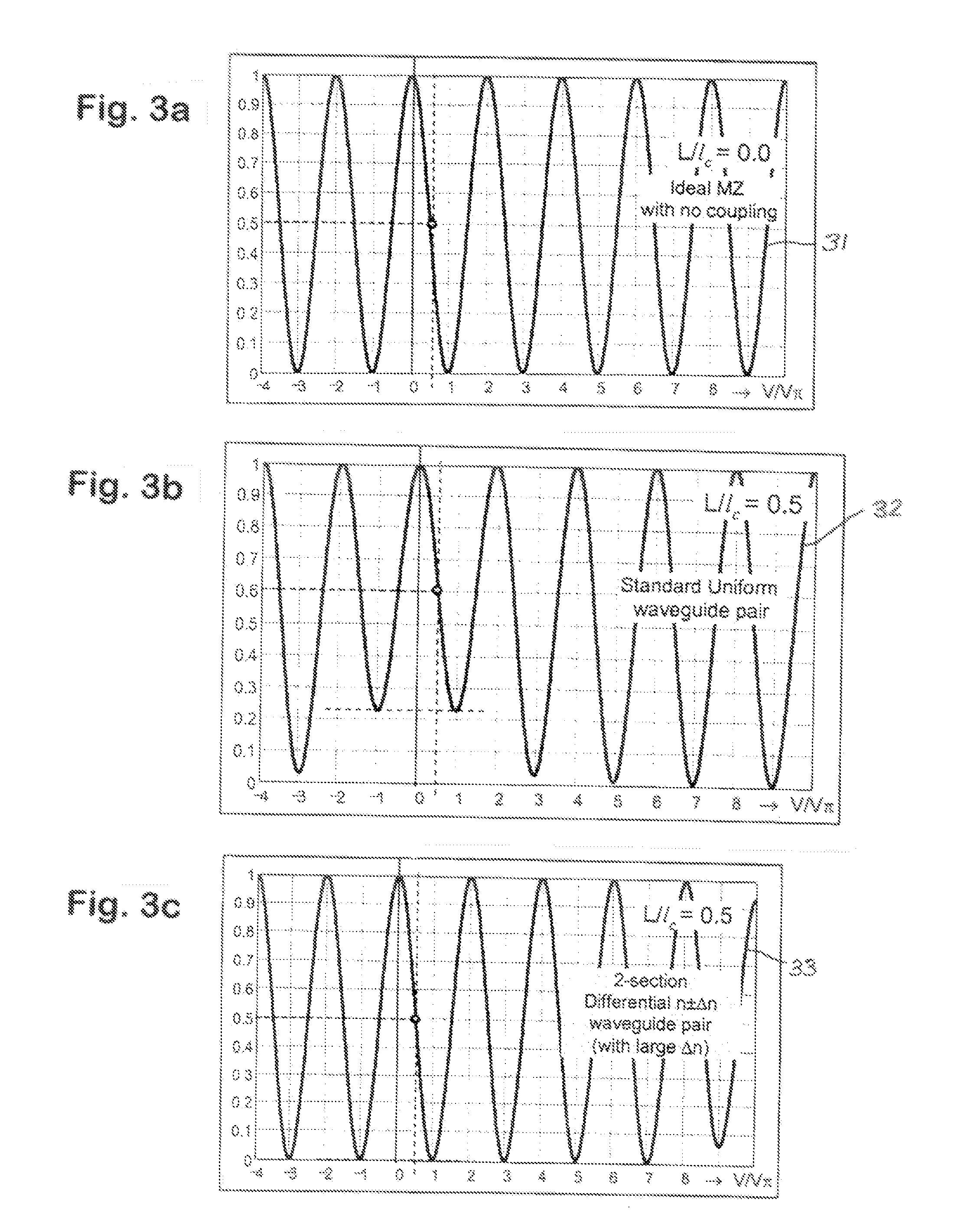Advanced Techniques for Improving High-Efficiency Optical Modulators
- Summary
- Abstract
- Description
- Claims
- Application Information
AI Technical Summary
Benefits of technology
Problems solved by technology
Method used
Image
Examples
Embodiment Construction
[0054]This invention describes advanced techniques to improve the efficiency of electro-optical waveguide modulators such as those fabricated on electro-optic material such as LiNbO3 substrate. These invention concepts can be applied to other types of modulators such as those fabricated on polymer, semiconductor, etc. These individual techniques can be applied separately or combined to realize higher efficiency modulators.
[0055]For clarity, these advanced techniques are described as applied to one of the most common and widely used optical modulators, namely wideband traveling-wave X-cut Y-propagation LiNbO3 Mach-Zehnder (MZ) electro-optic waveguide modulators, as prime examples.
[0056]First described is the creation and operation of this LiNbO3 MZ waveguide modulator followed by the inventions to improve this conventional device design.
[0057]Currently, one of the most widely-used optical modulators is a Mach-Zehnder (MZ) interferometer waveguide intensity modulator based on X-cut Y-...
PUM
 Login to View More
Login to View More Abstract
Description
Claims
Application Information
 Login to View More
Login to View More - R&D
- Intellectual Property
- Life Sciences
- Materials
- Tech Scout
- Unparalleled Data Quality
- Higher Quality Content
- 60% Fewer Hallucinations
Browse by: Latest US Patents, China's latest patents, Technical Efficacy Thesaurus, Application Domain, Technology Topic, Popular Technical Reports.
© 2025 PatSnap. All rights reserved.Legal|Privacy policy|Modern Slavery Act Transparency Statement|Sitemap|About US| Contact US: help@patsnap.com



